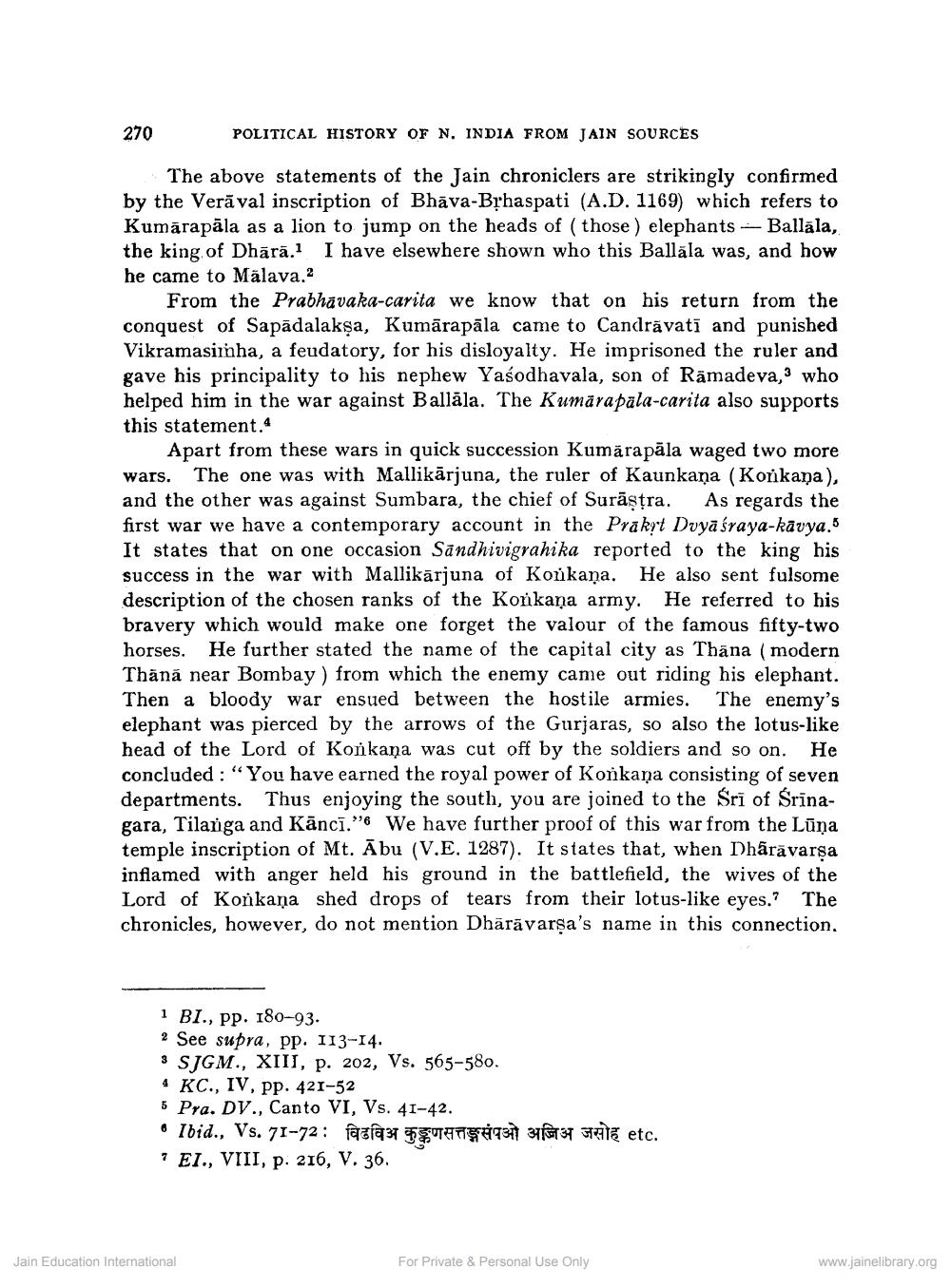________________
270
POLITICAL HISTORY OF N. INDIA FROM JAIN SOURCES
The above statements of the Jain chroniclers are strikingly confirmed by the Verā val inscription of Bhāva-BỊhaspati (A.D. 1169) which refers to Kumārapāla as a lion to jump on the heads of (those) elephants - Ballāla, the king of Dhārā. I have elsewhere shown who this Ballāla was, and how he came to Mälava.?
From the Prabhavaka-carita we know that on his return from the conquest of Sapādalakşa, Kumārapāla came to Candravatī and punished Vikramasimha, a feudatory, for his disloyalty. He imprisoned the ruler and gave his principality to his nephew Yasodhavala, son of Ramadeva,who helped him in the war against Ballāla. The Kumarapala-carita also supports this statement.
Apart from these wars in quick succession Kumārapāla waged two more wars. The one was with Mallikārjuna, the ruler of Kaunkana (Konkana), and the other was against Sumbara, the chief of Surāşțra. As regards the first war we have a contemporary account in the Prakyt Dvyāśraya-kavya.5 It states that on one occasion Sāndhivigrahika reported to the king his success in the war with Mallikarjuna of Konkaņa. He also sent fulsome description of the chosen ranks of the Korkaņa army. He referred to his bravery which would make one forget the valour of the famous fifty-two horses. He further stated the name of the capital city as Thāna (modern Thānā near Bombay) from which the enemy came out riding his elephant. Then a bloody war ensued between the hostile armies. The enemy's elephant was pierced by the arrows of the Gurjaras, so also the lotus-like head of the Lord of Konkana was cut off by the soldiers and so on. He concluded : "You have earned the royal power of Konkaņa consisting of seven departments. Thus enjoying the south, you are joined to the Śrī of Śrīnagara, Tilarga and Kāncī." We have further proof of this war from the Lūņa temple inscription of Mt. Ābu (V.E. 1287). It states that, when Dhārāvarsa inflamed with anger held his ground in the battlefield, the wives of the Lord of Konkaņa shed drops of tears from their lotus-like eyes.? The chronicles, however, do not mention Dhārāvarşa's name in this connection.
1 BI., pp. 180-93. 2 See supra, pp. 113-14. 3 SJGM., XIII, p. 202, Vs. 565-580. 4 KC., IV, pp. 421-52 5 Pra. DV., Canto VI, Vs. 41-42. • Ibid., Vs. 71-72: fazla31 FEATSÅ931 ? EI., VIII, p. 216, V. 36.
ST
E etc.
Jain Education International
For Private & Personal Use Only
www.jainelibrary.org




